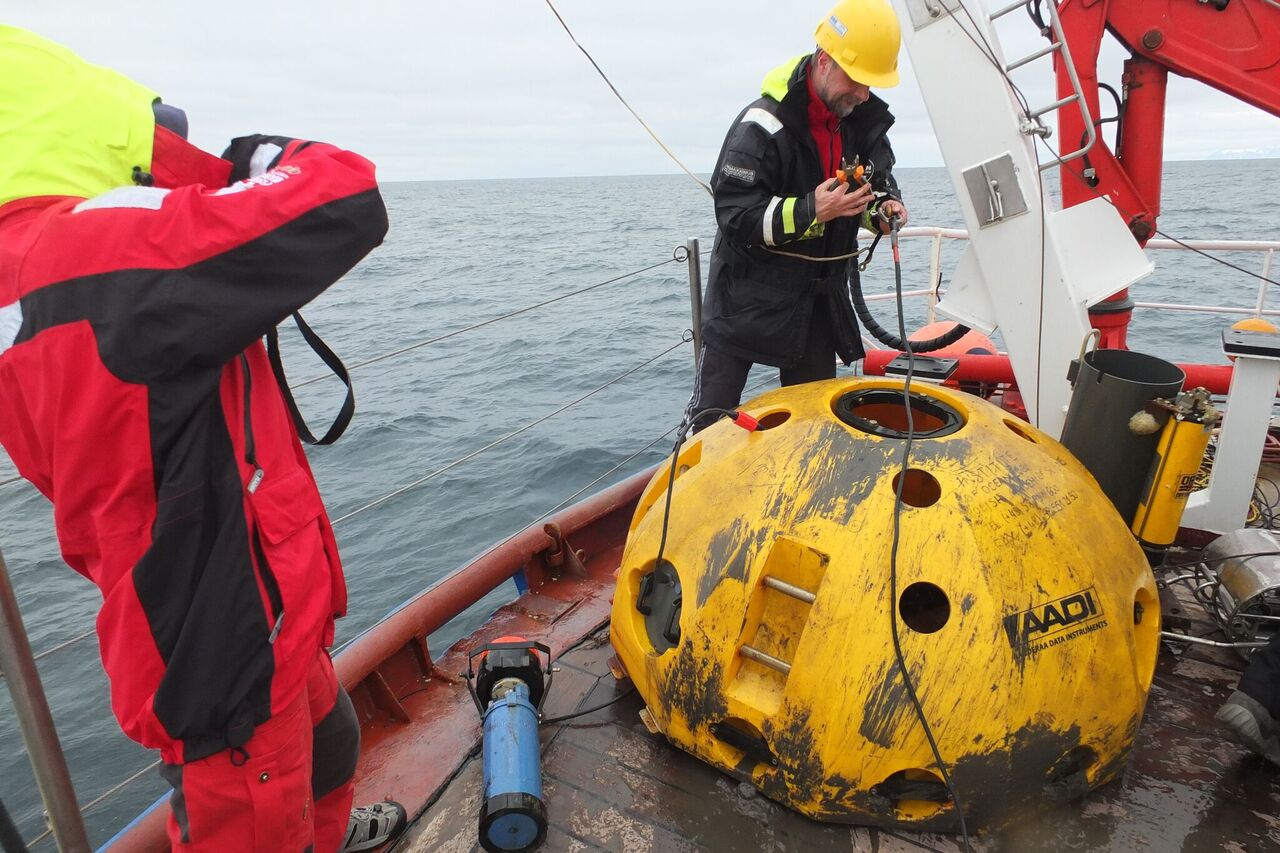
The first round of INTAROS summer fieldwork (2017) is underway in the Arctic. Researchers from across Europe have set out to gather a range of data from the northern latitudes.
Earlier in the summer, IOPAN conducted a large-scale hydrographic survey on RV Oceania in the eastern Norwegian and Greenland seas, Fram Strait and north of Svalbard. The cruise ran from 14 June to the 7 July 2017. The RV Oceania again set sail for a second cruise, co-organised by IOPAN and LOCEAN (10 to 31 July, 2017) with RV Oceania for the deployment of the LOCEAN Slocum glider in the northern Fram Strait for a 2-month mission. IOPAN and LOCEAN will collaborate once again in September 2017 for the deployment of four moorings north of Svalbard at 22° and 30°E.
Meanwhile, the Max-Planck-Institute for Biogeochemistry, Dept. Biogeochemical Systems conducted field work in Northeast Siberia from 26 June to 14 July 2017. The field work took place at the Ambarchik Bay Observatory, where PhD student Martijn Pallandt from MPI-BCG is working. Activities included instrument maintenance, sensitivity tests/experiments for data quality assessment, and preparations for installation of new INTAROS flask sampling system in summer 2018
Our Canadian partners CNRS Takuvik headed to Bylot Island, Baffin Bay, to perform soil carbon measurements (73 N, 80 W), drilling a few m deep in the permafrost. CNRS Takuvik also measured carbon in soil at Umiujaq (Nunavik Peninsula, Greenland) as a function of vegetation cover, and performed drone-borne lidar surveys in preparation for a winter campaign to measure snow depth as a function of vegetation cover. CNRS Takuvik also deployed 7 Bio Argo floats in Baffin Bay between July 20 and 22, 2017.
The CHINARE 2017 expedition started on 20 July and ran until 10 October. The R/V Xuelong navigated through the Bering Strait and sailed through the central passage, returning through the north-west passage. A number of SIMBA sea ice mass balance buoys operated by the National Marine Environmental Forecasting Centre (NMEFC), Polar Research Institute of China (PRIC) and Finnish Meteorological Institute (FMI) were deployed during CHINARE2017 expedition in the high Arctic. The regional sea ice forecast along the R/V Xuelong cruise trajectory was made by the National Marine Environmental Forecasting Centre (NMEFC) during the expedition. The NMEFC and PRIC are official non-EC partners of INTAROS project. The SIMBA buoy observations can be part of Integrated Arctic Observing System.
Work has started to identify community-based observations that are important for the inhabitants of Longyearbyen. As part of this work Lisbeth Iversen, NERSC, has established collaboration between INTAROS and the REGIMES project, led by Dorothy Dankel at UiB and funded by the Research Council of Norway. The project investigates the impact of climate change on ecosystem services (such as fish and other renewable natural resources) in the Norwegian Sea and Arctic regions, integrated into geo-political situations that arise, and into modern interpretations of the Svalbard Treaty. The two projects organised a field trip to Svalbard (7 - 10 August) with 5 students and one teacher from the Amalie Skram Upper Secondary School in Bergen. The aim of the trip was to interview people and get insights into the present life in Longyearbyen and Svalbard; not only to understand how climate change affects everyday life at present, but also how it could affect the future. You can learn more about this field trip here.
NERSC participated in a scientific cruise in the Beaufort Sea from 19 September to 13 October, 2017. Seven subsurface oceanographic moorings were recovered in the Beaufort Sea north of Alaska for the Canada Basin Acoustic Propagation Experiment (CANAPE). The experiment combined measurements of acoustic propagation and ambient noise with the use of an ocean acoustic tomography array to help characterize the oceanographic variability throughout the year in the central Beaufort Sea. More info about the cruise is available here.
GFZ German Research Centre for Geosciences, Helmholtz Centre Potsdam, carried out field work at the Russian-German Research Station Samoylov Island in the Lena River Delta from 3 – 25 September. The GFZ crew consisted of Christian Wille (engineer) and Prof. Torsten Sachs in addition to colleagues from AWI and the University of Hamburg. The purpose of the trip was mainly maintenance and winterization of climate and GHG flux instrumentation, installation of an instrument hut in the field, relocating sensors to a new 10 m tower. More information about the station is found in the interactive website.
The Beaufort Gyre Observing System (BGOS) 2017 cruise scheduled for Sept 6 to Oct 2. BGOS is organised by WHOI US, Department of Fisheries and Oceans, Canada, and others, and will include hydrography, mooring work and buoy deployments in the Canada Basin region. You can follow a blog from the field via "Expeditions", on the BGOS website.
24 July 2017